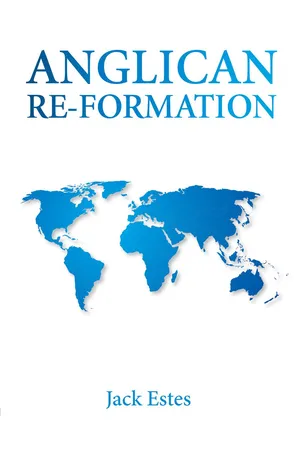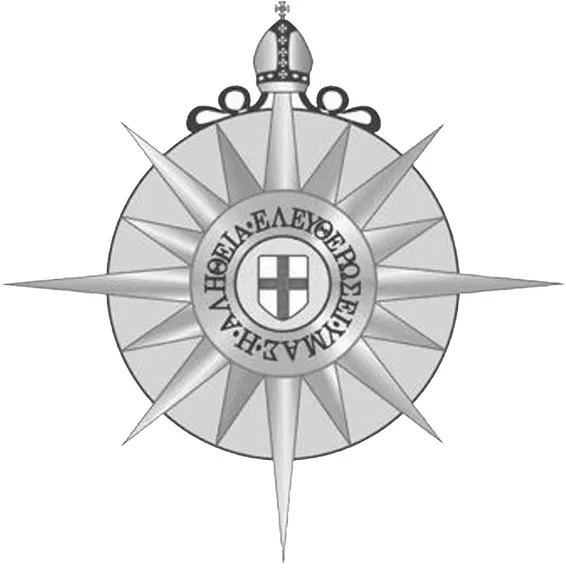![]()
Ism:
“A distinctive doctrine, cause, or theory;
The adherence to a system or class of principles”
—Merriam Webster
Chapter 1
Anglican-Ism
The Anglican Church is a world-wide phenomena, with thirty-nine provinces spanning the globe, hundreds of bishops and archbishops, and millions of faithful members. As far as Christian denominations are concerned, the Anglican Communion ranks third in strength worldwide, eclipsed only by the Eastern Orthodox Churches and the mammoth Roman Catholic Church led by the pope in Rome. Yet, what exactly is the Anglican-Ism? Ask the question to a room full of Anglicans, and you will probably hear a room full of answers. Ask the question to those outside the Anglican fold, and you may not find any answer that is coherent. To quote a phrase, it’s complicated. The answer lies in considering the essential principles on which the Anglican Church was founded to begin with, along with the ongoing historical developments and decisions which have added to its character. Of course, such an undertaking could easily fill several volumes, and what I offer here is more of an astute, succinct assessment for the purpose of this book. Nevertheless, let us consider the following as pieces to the puzzle from which, when properly fit together, emerge a portrait of the Anglican-Ism:
Church of England
The Anglican Reformation—Sixteenth Century
In order to arrive at a coherent discussion of the Anglican re-formation of the present day, we must first begin with a consideration of the Anglican reformation of the 16th century-a reformation that was in and of itself part of the larger protestant movement of the time. For it was in this period of time that foundational principles were established in Anglicanism which continue to exert influence down through time and into the present. For our purposes, we will not attempt an exhaustive analysis of the protestant reformation. However, certain key elements that formed the distinctively Anglican expression are necessary to identify and explore, so that when we arrive at the discussion of present day reformation we may understand the theological and ecclesiological landscape in which we live. Specifically, then, let us consider: the conflict between protestant and catholic spirituality; the solution of the Via Media; apologists Jewel and Hooker; and the Anglican comprehensiveness that developed as a result.
Protestant and Catholic Spirituality
Spirituality in the broad sense of the word may be best understood as our whole approach to relationship with God. In this sense spirituality includes theology, the understanding of who God is, worship, both corporate and private, revelation, how God communicates, and especially authority, that is what we deem to be authoritative in our spiritual lives. In the sixteenth century, theology, worship, revelation, and authority combined to form the matrix of the conflict between protestant and catholic factions within the church: each assumed different approaches to spirituality; each answered the questions of God, man, and church on the basis of their own understanding of authority; and each lived out their own expression of worship as a result.
Catholic spirituality could be considered as the more progressive faction of the time. The Roman Catholic Church could point back through apostolic succession to the Apostle Peter as the first pope of Rome. Thus, it was “the” institution of worship in western society, and as such sought to maintain its position as final arbiter between man and God regarding all things spiritual; tradition, the ongoing life and practice of the church, was viewed as being equally authoritative as scripture. Both were deemed to be sources of revelation from God: scripture being the original record of the words and works of God given to mankind; tradition being the progressive ongoing revelation given through the church, as history continued to unfold. While tradition and scripture ideally would never contradict, in practice one or the other would have to take precedent as final authority in the life of the church. Catholic spirituality of the medieval era chose tradition.
The Catholic spirituality of the time may be best thought of as an outside to inside approach to relationship with God. Worship consisted of the external actions and practices of going to mass, confession, penance, giving of alms, etc. In the more advanced monastic forms, praying the daily office, vows of poverty, chastity, and obedience, along with surrender of personal choices in favor of communal life, amplified the understanding that a man’s spirit within was conditioned to be closer to God through discipline from without. The external actions and disciplines comprised the spiritual life. Through them the interior of the human heart and spirit were conditioned and transformed, outside to inside.
Protestants were the de facto conservatives of the day, reaching back to the roots of Christianity in the Greek New Testament and Apostolic teaching. They sought to correct the church and society from a tradition which they viewed as having erred from God’s original revelation in Holy Scripture. Sola Scriptura, scripture alone, was the rallying cry of the protestant reformation. Scripture alone was to be the final authority in all matters regarding both spirituality and church. In order for the church to maintain a proper course down through history tradition must yield to scripture, and wherever necessary be corrected by scripture. Naturally, this did not go over well with those who held the reigns of power in the Roman church.
The proponents of protestant spirituality took the opposite approach to their catholic counterparts. Instead of transforming the human spirit within by means of external actions, it was only God’s grace, and faith in him alone, that could redeem and transform the inner man. Sola Fide, faith alone, and Sola Gratia, grace alone, were added to form a triumvirate of theological belief. At best, external actions may only offer evidence of a preceding internal transformation. Works were dead. Worship began with personal prayers and meditation upon God’s word, along with an interior knowledge and experience of God’s amazing forgiveness and grace. Only afterward were found the external expressions of corporate worship and service to God as evidence of a life transformed, inside to outside.
The dichotomy between catholic and protestant spirituality in many ways continues even to this day. When the Anglican Church came into being, it was able to draw from each spiritual gene pool, to produce a kind of hybrid vigor. In much of the Anglican expression that follows, this external/internal tension between these spiritualities becomes part of a balanced whole.
In all fairness, both approaches to spirituality were contained within the Roman Catholic Church. Although both were nurtured down through time, the protestant impulse generally found less favor with those in higher authority, as it was seen as a threat to the status quo. Following the protestant reformation there came a Catholic counter reformation, which did indeed address many of the issues which fueled the protestant fires. But, in the sixteenth century these two visions of being Christian came to a flashpoint over the sale of indulgences by the pope in Rome. Luther lit the fire of protest, and the rest as they say is history.
The ensuing conflict engulfed all of Western Europe, with political, social, and ecclesiastic upheaval and realignment. At the time, reformation meant bloodshed, as church and government, armies and populace fought out the passions of their beliefs. In time this fervor spread to England, and the Anglican reformation was under way. Using the occasion of Henry the VIII’s marriage predicament, Thomas Cranmer and the English reformers effected a split with Rome and brought about the establishment of the Anglican Church.
Cranmer was influenced by the continental reformers, and especially the Lutheran expression, which had been embraced by his wife. He longed to see a revitalized Christian faith in England, and a restoration of worship throughout the churches of the land. Cranmer’s genius lay in his crafting of the Anglican Book of Common Prayer, as a means to bring order and conformity to every church in England. In this manner, he reunified the community of faithful on a national scale, for all were to be engaged in same services of prayer on Sundays and throughout the week. In addition, Cranmer instituted the placing and reading of the Holy Scriptures in English in every parish, so that all could hear the word of God in their own language.
Henry VIII, who is commonly known as the founder of the Church of England, was unable to move forward with his own selfish desires for divorce and remarriage, because, as a Roman Catholic, he was subject to the authority of the pope. However, as the reformation proceeded new jurisdictions were being formed based along ethnic and geographical lines, such as the Lutherans in Germany and the Reformed in Geneva. The monarchs, or rulers, of these jurisdictions were deemed to be the heads of the churches in their respective areas.
Cranmer and the other reformers approached Henry with a history lesson: before the Roman Catholic Church came to England and was established under the pope, there was already a Christian church present—the church of St. Patrick. Celtic Christianity had flourished first in Ireland and then throughout most of England from 432 to 597, until Rome sent St. Augustine to establish a Roman Catholic Church at Canterbury. As the Celtic Church and the Roman Church collided, the question needed to be addressed, “Which expression would be valid?” In 664 at the Synod of Whitby, King Oswy, ruled in favor of Rome, and the Celtic Church faded from the scene. Therefore, Cranmer argued that as king, Henry VIII was actually the head of the church in England that existed before Rome ever arrived, and as such could reverse the earlier ruling and grant himself a divorce. Henry got what he wanted, a new marriage and chance for a male heir, but Cranmer and the others who desired reformation in England also achieved their goals, and the Anglican Church came into being.
However, the conflict between protestant and catholic spiritualities, along with the resulting bloodshed, continued unabated until the populace was weary of religious strife. Finally, under the rule of Queen Elizabeth came the Anglican solution: The Via Media.
The Via Media
After years of bloody conflict between catholic and protestant forces in England, Elizabeth came to the throne. In a brilliant stroke of leadership, she gathered and reunified the English people around a new vision for the church and for the nation. Rather than being strictly catholic or strictly protestant, England would choose to compromise between them both: the Via Media, which literally means “middle way.” Thus, the first Anglican reformation was stabilized by maintaining that the church would retain the catholic forms of worship—orders, liturgy and sacraments, symbols and vestments—while embracing the protestant reforms of doctrine—sola scriptura, sola fide, sola gratis. The aptly named “Elizabethan Settlement” produced a beautifully harmonized English church, with a unity based in common prayer. Thereby, Anglicans maintained continuity with the catholic tradition of the church, and embraced the protestant return to the roots of Christianity and the authority of Holy Scripture. There remained, however, many who were deeply committed to one sid...

